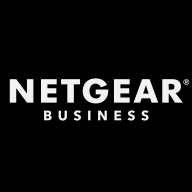

NETGEAR Insight Access Points and Aruba Instant On Access Points compete in the business wireless networking market. NETGEAR has an advantage in pricing and customer support, while Aruba excels in its feature set.
Features: NETGEAR Insight Access Points offer easy cloud management, integration with NETGEAR systems, and remote monitoring. Aruba Instant On Access Points provide advanced security, high performance, and scalability, making them suitable for growing businesses.
Room for Improvement: NETGEAR could enhance advanced security features, expand performance options, and improve scalability. Aruba could work on simplifying deployment for non-technical users, reduce overall complexity, and offer more competitive pricing.
Ease of Deployment and Customer Service: NETGEAR Insight Access Points are known for straightforward deployment and robust customer support, facilitating rapid setup and troubleshooting. Aruba offers user-friendly deployment but features may require additional customer service interaction for optimal use.
Pricing and ROI: NETGEAR Insight Access Points are cost-effective with a quick return on investment, appealing to budget-conscious buyers. Aruba Instant On Access Points, priced higher, offer more long-term value through enhanced features, targeting those who prioritize advanced functionality.


Ingredients for success.
Fast 802.11ac Wave 2, secure employee and guest access, easy-to-use web, and mobile app management.
Say yes to secure Wi-Fi access.
Pre-built access control lists (ACLs) and built-in firewall in the access points prevent malicious traffic from entering your network – we call it “hassle-free” security.
Never drop an important call.
With Instant On, voice and video business applications are automatically prioritized, so you stay connected with your peers.
At NETGEAR, we turn ideas into innovative networking products that connect people, power businesses, and advance the way we live. Easy to use. Powerful. Smart. And designed just for you.
We monitor all Wireless LAN reviews to prevent fraudulent reviews and keep review quality high. We do not post reviews by company employees or direct competitors. We validate each review for authenticity via cross-reference with LinkedIn, and personal follow-up with the reviewer when necessary.